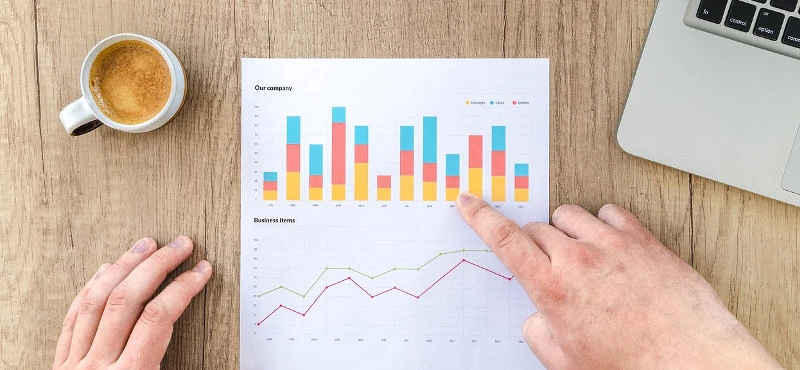Effective Annual Yield Calculator
The Compounding Power of Effective Annual Yield
Table of Contents
- Understanding Bond Yields
- What is Effective Annual Yield (EAY)?
- Calculating Effective Annual Yield
- Effective Annual Yield Formula
- Examples
- Interpreting the Results
- Factors Affecting Bond Yields
- Frequently Asked Questions
- What is Effective Annual Yield (EAY)?
- How is EAY different from nominal yield?
- Why is coupon frequency important in calculating EAY?
- What do 'face value' and 'annual coupon payment' mean?
- Can EAY be used to compare bonds with different coupon frequencies?
- How do market conditions affect EAY?
- Is EAY relevant for all types of bonds?
- How can investors use EAY in their investment decisions?

Bonds stand out as a beacon of stability and predictability. However, this apparent simplicity masks a crucial aspect that every investor must understand: the yield. Yield, in its essence, is the return on your bond investments, acting as a key indicator of profitability and risk. But there's more to it than meets the eye.
The importance of grasping bond yields cannot be overstated, especially when considering the compounding effects over time. Small differences in yield percentages can significantly impact the total returns over an investment's lifespan. This is where the Effective Annual Yield (EAY) Calculator comes into play—a tool designed to demystify the complexities of bond yields and empower investors with precise, actionable insights.
Understanding Bond Yields
At its core, a bond yield is the rate of return a bondholder receives on their investment. It sounds straightforward, yet there are different flavors of yields, each providing unique insights:
-
Nominal Yield - This is the most basic form, calculated as the annual coupon payment divided by the bond's face value. It gives a surface-level view of the investment's return.
-
Current Yield - A step further, the current yield considers the bond's current market price, offering a more realistic snapshot of return.
-
Yield to Maturity (YTM) - YTM is a comprehensive measure, accounting for all future coupon payments and the difference between the bond's current price and its face value at maturity. It's a vital tool for long-term investment strategies.
Understanding these different yields is crucial in making informed investment decisions. They offer varying perspectives on the potential returns and risks associated with bond investments.
What is Effective Annual Yield (EAY)?
Diving deeper, the Effective Annual Yield (EAY) stands out as a critical measurement. It's the reality check every investor needs, revealing the true annual return on investment by considering factors like compounding frequency.
-
Definition and Importance - EAY transforms the nominal or stated interest rate into an annual rate that accounts for compounding. It's a truer reflection of your investment's performance.
-
Difference from Other Measurements - Unlike nominal or current yields, EAY provides a more comprehensive understanding by including the effects of compounding interest, crucial for accurate long-term planning.
-
Significance in Bond Investments - For bonds with different compounding frequencies (annual, semi-annual, quarterly, or monthly), EAY offers a common ground for comparison, allowing investors to accurately assess and compare the potential returns of different bond investments.
Understanding the Effective Annual Yield is not just a matter of arithmetic—it's a key to unlocking the true potential of your bond investments. With the EAY Calculator, investors can navigate this complex terrain with greater confidence and precision, ensuring their decisions are informed and their investments are optimized for the best possible returns.
Calculating Effective Annual Yield

When it comes to unraveling the true annual yield on an investment, the Effective Annual Yield (EAY) stands as a pivotal metric. Here's how it's calculated and why each component matters:
Effective Annual Yield Formula
The formula for calculating EAY is:
where 'i' represents the annual interest rate and 'n' is the number of compounding periods per year. This formula helps determine the effective annual yield, taking into account the frequency of compounding interest.
The 'n' in the formula represents the coupon frequency—how often interest is compounded within a year. This could be annually, semi-annually, quarterly, or monthly. The frequency of compounding significantly influences the EAY, as more frequent compounding periods per year can lead to a higher yield.
Face Value: This is the principal amount of the bond or its value at maturity.
Annual Coupon Payment: The total interest paid to the bondholder annually, based on the bond's interest rate.
Coupon Frequency: This determines the compounding periods per year—annually, semi-annually, quarterly, or monthly.
Examples
Consider a bond with a face value of $1,000, an annual coupon payment of $50, and a semi-annual coupon frequency. Using the EAY formula, we can calculate its effective annual yield, providing a clearer picture of the annual yield on the investment.
Interpreting the Results
The output of the EAY calculator is more than just a number. It's a critical insight into your investment's performance.
-
Understanding the Output: The calculated EAY reveals the true annual yield on an investment, considering the impact of compounding interest.
-
Using the Results in Decision Making: By understanding the effective annual yield definition and its output, investors can make more informed decisions, selecting bonds that offer the most favorable returns according to their investment strategy.
-
Comparing Yields of Different Bonds: With EAY, comparing different bonds becomes straightforward, even if they have different compounding frequencies. It allows for an apples-to-apples comparison, crucial in building a diversified and balanced investment portfolio.
Factors Affecting Bond Yields

Several external factors play a significant role in influencing bond yields:
-
Interest Rates: Fluctuations in market interest rates can significantly impact bond yields. As interest rates rise, new bonds may be issued with higher yields, affecting the market value of existing bonds.
-
Market Conditions: Economic factors, inflation rates, and the overall health of the financial markets can influence bond yields. In turbulent economic times, investors may seek the safety of bonds, impacting yields.
-
Impact on Effective Annual Yield: These external factors affect not only the nominal yield but also the effective annual yield. As market conditions and interest rates change, so does the compounding frequency and rate, altering the EAY of bonds.
Understanding these dynamics is crucial for investors looking to maximize their returns while managing risk. The Effective Annual Yield offers a robust framework for navigating these complexities, ensuring that investment decisions are based on comprehensive and accurate financial insights.
Frequently Asked Questions
What is Effective Annual Yield (EAY)?
EAY is a measure of the actual annual yield on an investment, considering the effects of compounding interest. It's essential for comparing the returns of bonds with different compounding frequencies.
How is EAY different from nominal yield?
Unlike nominal yield, which is based on the face value and interest rate of a bond, EAY takes into account the frequency of compounding interest, providing a more accurate reflection of the investment's annual return.
Why is coupon frequency important in calculating EAY?
Coupon frequency determines the number of compounding periods per year. More frequent compounding (like monthly or quarterly) can result in a higher EAY compared to annual compounding.
What do 'face value' and 'annual coupon payment' mean?
Face value is the bond's principal amount or its value at maturity. Annual coupon payment is the total interest paid to the bondholder annually, based on the bond's interest rate.
Can EAY be used to compare bonds with different coupon frequencies?
Yes, EAY provides a common ground for comparing the yields of bonds with different coupon frequencies, offering a fair comparison.
How do market conditions affect EAY?
Market conditions, including interest rates and economic stability, can influence bond yields. Changes in these factors can affect the EAY by altering the expected returns on newly issued bonds.
Is EAY relevant for all types of bonds?
Yes, EAY is a crucial metric for all types of bonds, especially those with varying compounding frequencies and interest rates.
How can investors use EAY in their investment decisions?
Investors can use EAY to assess the true annual yield of different bond investments, aiding in the selection of bonds that align with their investment goals and risk tolerance.

